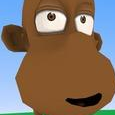Search the Community
Showing results for tags 'bones'.
-
Hello everybody. I'm trying to make a thin mattress (a simple parallelepiped with textures) roll up. The first try was with a curve path ( a spiral shape) linked to the mesh, animated and modelled in blender, but the result in babylon js didn't preserve the deformation infos. The mattress was still, it didn't move except for a translation on the X axes, and inspecting the scene i could see the spiral in the meshes but not the information about the animation. So i tried with armatures cause i read that it's well supported in babylon js. With a simple curve animation of the bones the model's behaviour was the same as in blender, so it was performing in a great way. But, when i elaborated the bones structure to simulate the roll up, doing a spiral, the model was fine in blender but in babylon js it started behaving in a messed up way. My question is, is that an impossible type of armature animation to achieve cause it's not what a bone structure is supposed to do, or am i missing some exporting setting/modelling steps? In alternative, as far as you know, is there a way to achieve that kind of animation? I'm sorry (it's my first thread here) but I wasn't able to attach a photo of the behaviour cause an error occurred "/var/www/html/uploads/monthly_2019_09 could not be created. Please contact us for assistance." Thank you so much for the eventual support, have a great day! Arianna
- 2 replies
-
- bones blender babylonjs
- bones
-
(and 2 more)
Tagged with:
-
Hello everybody. I'm trying to make a thin mattress (a simple parallelepiped with textures) roll up. The first try was with a curve path ( a spiral shape) linked to the mesh, animated and modelled in blender, but the result in babylon js didn't preserve the deformation infos. The mattress was still, it didn't move except for a translation on the X axes, and inspecting the scene i could see the spiral in the meshes but not the information about the animation. So i tried with armatures cause i read that it's well supported in babylon js. With a simple curve animation of the bones the model's behaviour was the same as in blender, so it was performing in a great way. But, when i elaborated the bones structure to simulate the roll up, doing a spiral, the model was fine in blender but in babylon js it started behaving in a messed up way. My question is, is that an impossible type of armature animation to achieve cause it's not what a bone structure is supposed to do, or am i missing some exporting setting/modelling steps? In alternative, as far as you know, is there a way to achieve that kind of animation? I'm sorry but I wasn't able to attach a photo of the behaviour cause an error occurred "/var/www/html/uploads/monthly_2019_09 could not be created. Please contact us for assistance." Thank you so much for the eventual support, have a great day! Arianna
-
Hi, I've 2D vertices array and bones. Can you please suggest algorithm for construction of per bone weights for vertices. Currently I'm assigning weights by dividing 1 to bones distance from vertex, not sure how correct this is. Thanks.
-
I have several animations which are a single key frame. I guess we could say they're just a pose. Is there a way to transition to that pose smoothly? I'm imagining something like whatever the current animation code does to go from one frame to another, except it would go from bones in *any state* to moving those bones towards anything saved in a certain keyframe. Unless that stuff is baked, which I guess would be an issue. In any case, something like graduallyToPose(skeleton, someFrame, deltaToApply) is what I have in mind. Does something like that exist? Or are there some recommended building blocks from which I could make it? I see an easy way to make (fake?) an equivalent behavior with animation blending. If I turn all my poses into 2 keyframes then I can make each of them an ever-looping 2 frame animation. Then I can blend between them endlessly, smoothly moving my character from any pose to any pose, and even being able to interrupt any transition and go to yet another pose. I just wasn't sure how performance heavy that would be given that I don't actually have real animations, and I would be putting a dozen of these on 50+ meshes each. Edit: The animation blending demo https://www.babylonjs-playground.com/#IQN716#9 actually does have an 'idle' state which is 89 frames of no change and is essentially what I'm trying to get at with poses.
-
I'm using addMeshTask to load my models, and I'd like to start loading bones from them as well. Is there a similar function for loading bones asynchronously? (The documentation seems silent on this point.)
-
Sorry if this is a dumb question but I couldn't find an exact answer on google! Are bones in a rig technically individual points/nodes or are they counted as the connecting lines between two points/nodes? For example, if I've got this biped rig below, would this leg count as having 4 bones (in red, the connecting lines between two points/nodes) or would it count as 5 bones (in blue, each individual point/node in the bone chain)? I'm working on a character rig but need it to work on iOS devices, and I've read that iOS only supports up to about 32 bones per rig... so I'm trying to count my rig's bones exactly to make sure I'm not over that limit. ? Thanks!
-
Just a quick little demo of something I thought would be fun to create. No smoothing groups or textures and dirty animations. PoC PoC PoC. All separate weapon parts are weighted to bones, so they can be positioned, scaled and rotated individually, to create endless weapons(Only 4 in this example), all from a single mesh. I've chosen to do it in 3Ds Max, although it can be done in code as well. http://playground.babylonjs.com/#ZIH5Y7
- 1 reply
-
- babylon.js
- bones
-
(and 2 more)
Tagged with:
-
I have a person with rigged eyeballs. I can get the bone of the eyeball and move it around while the person is not animated. But when the person is walking I can no longer control the eyes. They just stay fixed in the same place. It feels like the eyes have motion set in the key data in the .babylon file. Does anyone know how to control a bone while an animation is running?
-
QUESTION: What are the minimum steps required to get a bone to export from blender and to be visualized with Debug.SkeletonViewer? Having trouble making a cube add a bone and then export to babylon. After a bunch of variations I see why... there are many steps: Applied: Object->Apply->Location & Rotation & Scale. And ensured Camera Icon is on Armiture (exporting). Weight Painted. Or setParent-> Auto Weights. And added Armiture modifier... still no bones. Tried two different loading types, two different export types (Tower of Babel), and then... #3 glTF. Fabulous! I'll leave the tips that I find below. GOAL: open blender > add 1 bone inside a cube or tube and > export to .babylon > then see bone with Debug.SkeletonViewer. PURPOSE: to run a bunch of test animations on bones (at runtime). CONTEXT: Blender version (2.78) and updated the exporter (babylon.js ver 5.4.2). Also Tower of Babel, and glTF exporter 1.0. UPDATE: glTF animations look promising. I'll provide answer here for minimum steps to animate GLTF Blender Export. Any tips of things to try in this experiment? Thx.
-
Hello. I've been experimenting and enjoying Babylon.JS; thanks for all the hard work on the library. I've been trying to blend loaded model bone animations and run into issues. The simplest case would be idle->walk->run loops. This has been mentioned a while back (pre v2) here, here, and here. While you can call custom animations on each bone (ie, arms get one frame set, legs get another), this doesn't help with easing between animations that use the same bone. Another suggestion was storing the combined animations in the model, but that doesn't allow for smooth transitions (or permutes up very quickly) As a learning experiment, I dove into the code. Here's a demo of my results. The babylon.js it references is a hack experiment where I do the following: 1) allow multiple animations per target by not calling stopAnimation(target) on beginAnimation 2) on every call to a scene's animation, pass along a cache 3) on every animation._interpolate() where datatype == Animation.ANIMATIONTYPE_MATRIX, write the matrix to the cache 4) if the animation._interpolate() has a cache hit, invoke the otherwise unused matrixInterpolateFunction() with a factor value to interpolate between the 2 matrix The result plays the animations, mostly. The result is flipped, both in normals and on the z-axis, which I don't understand (my grasp of matrix math is not great). Most of the work revolved around getting data passed between the otherwise isolated animation instances so they could be aware of the other animation to blend. This hack also doesn't handle an arbitrary number of animations to merge or an easy way to work with them, since calls to stop use the target as the common factor. What is the best way to approach this? Is there something I missed in the library? Or how could I implement this correctly for Babylon.js? Thanks
-
Hi guys I'm writing the locomotion algorithm for a character I created in blender. What I'm trying to achieve is a blend tree that will allow me to blend between the "walk-front", "strife-left" animations according to the velocity of my character (something similar to https://www.youtube.com/watch?v=Xx21y9eJq1U&feature=youtu.be&t=1263). I've been able to blend between two frames, by calculating a weighted average of the transformation matrix for each bone, so far so good. Now before going on with my development I'm asking myself the following design question. Supposing I will have a state machine to control the character, should I write an update(dt) method called at each engine tick and reposition its bones individually or rather bake at run-time a new animation with frames each time the direction/velocity changes? I just do not know the pros/cons sticking with Babylon Animations versus going on with my own update method. What I like of using Babylon Animations is the fact that I can fast up / slow down my walk cycles so to simulate faster/slower velocities. Thank you in advance for any feedback, Joez
- 10 replies
-
- animation blending
- bones
-
(and 1 more)
Tagged with:
-
Hello experts, I've selected babylon js to integrate a 3D human model to one of my mobile application developments. I'm using Ionic framework to write hybrid applications for iPad and android tablets. But when I integrated the 3D model in iPad, the animation was not working as expected. In order to find the issue, I tested the Bones example in babylon js example list on browser and experienced that even that example doesn't work on the safari browser of the iPad and iPhone. Here are some visual outputs of what I tested. Example on Mac, Chrome : Successfully working Example on iPad, Safari : Issues in human 3D model Example on iPad, Chome : Issues in human 3D model Example on Android, Chrome : Successfully working In summary, the 3D human model has few issues in iPad. I've experienced same issues in iPhone too. Can someone help me to understand what would be the problem and any fixes if this is an already known problem? Thanks.
-
trying to test syncImpostorWithBone() and syncBoneWithImpostor() functions. I know there is a nice example from http://playground.babylonjs.com/#PM5MFS#5 , yet I don't know how exactly it works by using my own model. I created a simple 3d model from 3ds max, with a box and a single bone attached, and applied with skin modifier. (as attached image shown) Also, there is no transformation, scaling or any rotation on the bone and box. Then I tried to run my version , I think I am missing something , the loaded model is not syncing properly. http://www.babylonjs-playground.com/#1ZCM3K could anyone please give me a right direction or fix? much appreciated for any help, thanks
-
Hello, I'd like to import a blender animation (a simple plane skinned to a single bone) via glTF into BJS-sandbox, but it looks weird, I get a black animated triangle. To keep it simplest as possible, I removed the texture in the attached GLTF-file. Please can someone help or provide a functional sample (gltf or ideally in blender format) Thanks in advance armature.gltf
-
So, I'm looking for ways to create a ragdoll effect using Cannon.js, and (preferably) a skinned, imported mesh. I tried the following 2 methods: #1: Use getRotation/position/absolute.. etc on the bones, to match with the Cannon bodies. This doesn't seem to work like it does the other way around (Match Cannon body to bone position and rotation). #2: Split my model into the different body parts, so each and every limp can be used seperately. This 'can' work, but requires a lot of work, and won't look as good as on a skinned model. Here is an example of a ragdoll, shamelessly stolen from the Cannon.js Three.js Ragdoll example: http://www.babylonjs-playground.com/index.html#XVETC#3 I'm looking for creative ways of achieving this very same ragdoll effect, but with a model. Edit: Forgot to mention, press A to start the ragdoll by enabling the stepping of the Cannon world.
-
Hi, What I am trying to do here is a bit too complex to simulate it in a playground. I hope i can explain it. I have a mesh that was build from raw vertices and polygon data. I have added the bones weights and indices. I am sure these two arrays are fine, they come from the same original model as the vertices and polygons. I have checked this too. // The code to add the indices and weights to the mesh base_model.mesh.setVerticesData(BABYLON.VertexBuffer.MatricesIndicesKind, base_model.bonesIndices, true); base_model.mesh.setVerticesData(BABYLON.VertexBuffer.MatricesWeightsKind, base_model.bonesWeights, true); I then load a skeleton - also from the same origin, so the bones indices match those in the indices array. The skeleton is attached to the mesh. When I rotate bone #0, the entire mesh rotates accordingly. No surprises there, and to me this is proof that the weights and indices are effective. when I scale the bones, parts of the body also scale. Now, when I rotate bone#1- upper leg -, nothing at all happens. And nor does rotating the other bones have any effect. //The rotation command I use: rig.bones[1].rotate(BABYLON.Axis.X, .01, BABYLON.Space.WORLD, base_model.mesh); screenshot #1: you can see the bone rotates, but the mesh does nothing. screenshot #2: this is the original model, that does rotate the leg with the bone. screenshot #3: rotating bone #0 rotates the entire model. I know I am doing something strange here, but I assure you it is necessary to the application I am working on. I hope any of you have some suggestions where to look for an answer.
-
I am am experienced developer but a newbie on BabylonJS. I tried to solve a simple problem on my own for the last 5 days and no matter how hard I try it still doesn't work. I am looking for someone who can do it for me, and I am more than happy to pay. So.. work for hire Job: - I have a 3d rigged hand model made in blender with animations through bones. I managed to export it but after doing so, even the mesh looks good the animations look bad. Instead of the hand opening and closing all mesh gets awkwardly deformed. It seems as if the deformers of the bones got all screwed up. I need someone to fix this and show me how can I move programmatically each of the phalanges of the fingers of the hand. Please reply if interested I will post more information as requested. Thanks a million! I have a really bad headache. I have been trying for days with no luck and I have decided this problem is way above my head. So.. please help. Happy to pay!
-
I have two .babylon files. One with meshes and skeletons, but no animation. The other one has skeletons and animation, but no meshes. Turns out BABYLON.SceneLoader.ImportMesh doesn't load the skeletons at all, because there's no mesh in the file. Is there any way to import .babylon file with just skeletons and animation?
-
Hi all, I've been wondering, a mesh like "the dude" seems to be using a single skeleton(so you only have to call beginAnimation Once), but he is made up of several meshes, When i export meshes to babylon, the "main" mesh is exported with the entire skeleton(all bones), and children meshes are each exported with their own version of the skeleton (containing only the bones that mesh use), So i have to call beginAnimation for each mesh/child mesh. If i point the child meshes skeletons to the main mesh's skeleton (mesh.skeleton = mainMesh.skeleton), which also contains the bones the child mesh uses, and then beginAnimation, the child mesh is either spagetti, or just not animated properly, So my question, How is it achieved to use the same skeleton? using 3DS Max 2016, exporter 0.8.0, (also tried an older exporter, same result) Cheers
-
I was wondering if it's possible, and if yes, then how, to get more responsive movement when using getPositionToRef to attach a mesh to a bone assigned to some skeleton from an imported model. I think it's the same when using attachToBone. http://www.babylonjs-playground.com/#1N9CSW#2 The position and rotation of bone #6 (right hand) is used to position the sphere. Imagine it was a sword or a gun. Try moving the camera around, and notice the movement of the sphere. It seems to be a little behind, and not as crisp as one would have hoped for. Am I missing something here?
-
Hello everyone, long time no see! So i'v ran to an issue where i'm trying to attach meshes to bones from another import. I'v this torso which is built from 2 meshes and this torso assembly holds the skeleton. Then i'v another model and when i'm trying to place the import directly to head bone for example the model flips around Z axis and goes somewhere it doesn't really belong. I'v attached an image which hopefully explains more than my english does What i'm doing wrong? any ideas? - best regards, eljuko
-
Here's the deal, I'm importing a model with skeleton, bones, animations etc. I assign the model (Index 0) and the skeleton (index 0) global variables. Then, outside of Babylon's native import function, I clone the model and the skeleton, and run animation (from frames) just fine. The problem is, when I try to manually manipulate bones using their getters and setters, somehow, rotating 1 bone from 1 clone of the original, also rotates the bones of all other clones, as well as the original. Changing the names and ID's of bones doesn't seem to help, either. Soo. Is there any way of cloning bones? no clone function exists, and I'm unsure of how to approach this. I'll see if I can create a simple PG, as the project is pretty complex by now. As I mentioned, I can run different animations on the different skeletons without any issues. But as soon as I manually rotate bones, all clones + original are all affected.
-
Is there any way to get references to the bones a mesh is influenced by? I see there is : I need to get the names of bones.
-
Is it possible to show the skeleton/bones of an imported mesh? I don't mean lines and debugging layers, but actually rendering the bones themselves, so they won't stay hidden. Is this a possibility, or simply not a feature? PG example, because why not: http://www.babylonjs-playground.com/#1SJMJ0
- 4 replies
-
- babylon.js
- bones
-
(and 1 more)
Tagged with:
-
Hi guys. I have a little task that I can't complet it Let me explain. I have a sphere with 3 bones. Using bones and a slider I modify the sphere geometry, I can scale, translate or rotate the bones, It works like a morph. After deform the mesh I want to save it as new babylon file, without bones, but keep deform geometry, not original. In this scope I update positions, normals, compute normals, but all time the new babylon file is saved like original, and not deform. I have to update anything else? Or I have to save the skeleton too? ....If yes, than I have a problem, because I want to add an animation to the new mesh, that I think will overwrite the skeleton. Here are 2 picture that show my problem http://prntscr.com/8pd0co http://prntscr.com/8pd0qd first sphere is the original, and second is sphere saved. And I make a playground. http://www.babylonjs-playground.com/#1WKAQI#2 Any opinion is welcome. Thanks










